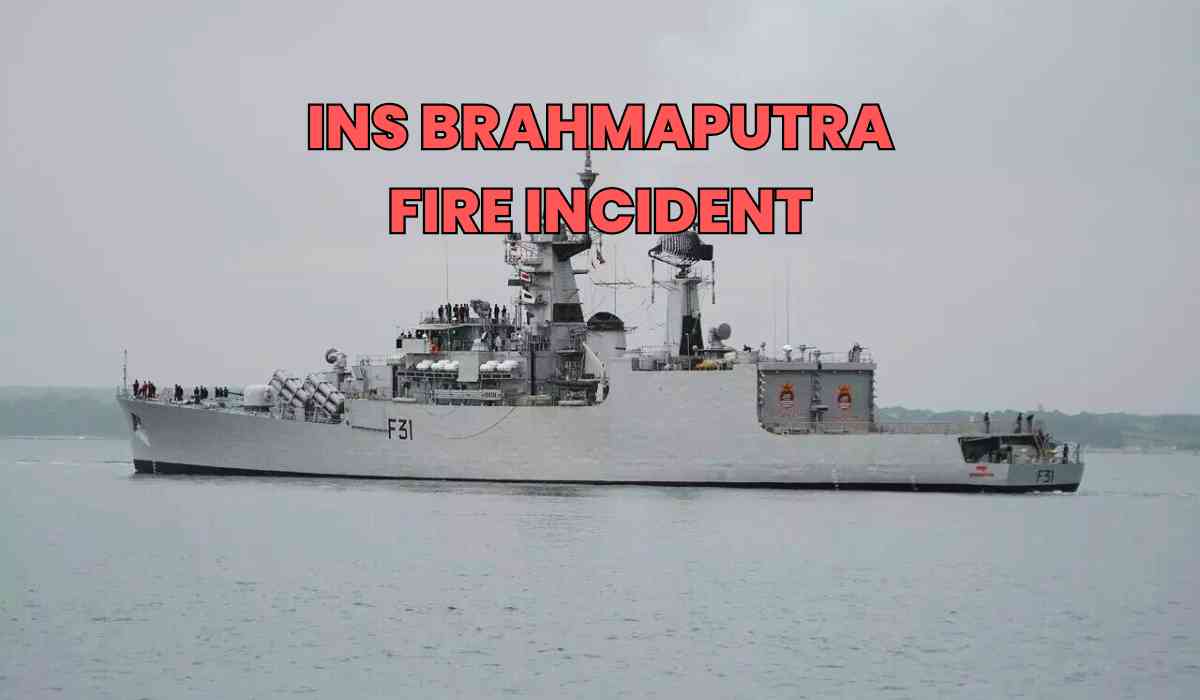On the evening of Sunday, July 21, 2024, a significant fire broke out aboard the Indian Navy's warship INS Brahmaputra while it was undergoing maintenance at the naval dockyard in Mumbai. As of the latest reports, a junior sailor remains missing, and a search and rescue operation is currently underway. Fortunately, all other personnel have been accounted for. The fire caused severe damage, resulting in the vessel listing to one side and resting alongside its berth.
Cause of the fire and ‘sinking’ of INS Brahmaputra will be determined by an enquiry. Not clear yet about chances of salvaging the frontline ship. Below a file pix of the ship and of the actual fire and its ‘listing’ on the port side pic.twitter.com/XkBpFp2kzv— Nitin A. Gokhale (@nitingokhale) July 22, 2024
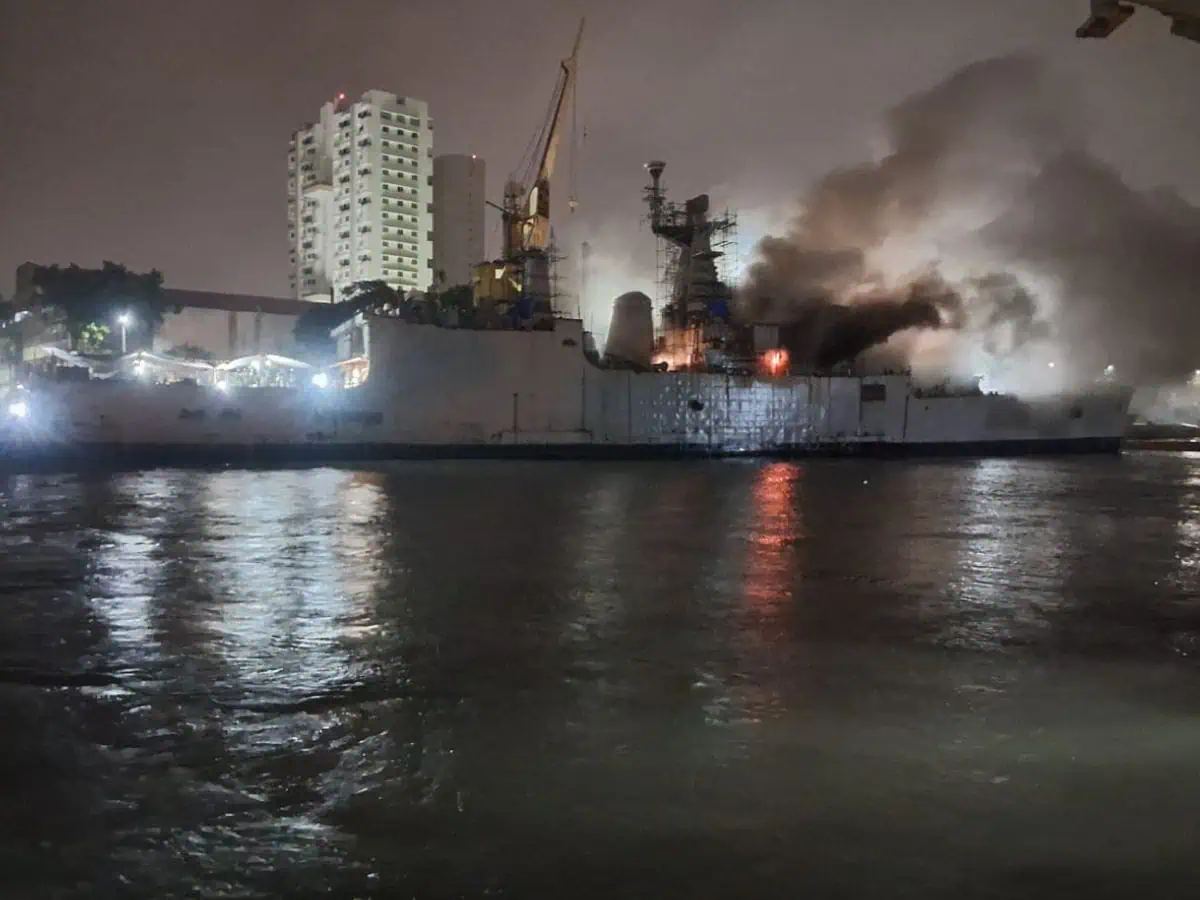
About INS Brahmaputra
- Background and Construction
INS Brahmaputra, the lead vessel of the Brahmaputra-class frigates, represents a significant milestone in the Indian Navy's efforts to enhance its indigenous naval capabilities. Built by the state-run Garden Reach Shipbuilders and Engineers Limited (GRSE), this frigate was commissioned into service in April 2000. The Brahmaputra-class ships are designed to replace the older Talwar-class frigates and are an upgrade over the Godavari-class frigates.
- Specifications and Features
The INS Brahmaputra is a multi-role frigate with a displacement of approximately 5,300 tonnes. It measures 125 meters in length and has a beam of 14.4 meters. The vessel is capable of reaching speeds exceeding 27 knots. Its crew typically consists of 40 officers and 330 sailors. The frigate is armed with a range of weaponry, including medium-range and close-range guns, surface-to-surface and surface-to-air missiles, and torpedo launchers. It also hosts a variety of sensors for comprehensive maritime warfare capabilities and can operate Seaking and Chetak helicopters.
- Historical Context
The ship's name, INS Brahmaputra, is derived from the famous river flowing through Assam. Its crest features a grey, one-horned Indian rhinoceros on a brown background over white and blue sea waves. In July 2006, INS Brahmaputra was part of Task Force 54 and was redirected to assist in Operation Sukoon, which aimed to evacuate Indian, Sri Lankan, Lebanese, and Nepalese nationals from the conflict zone during the Lebanon War.
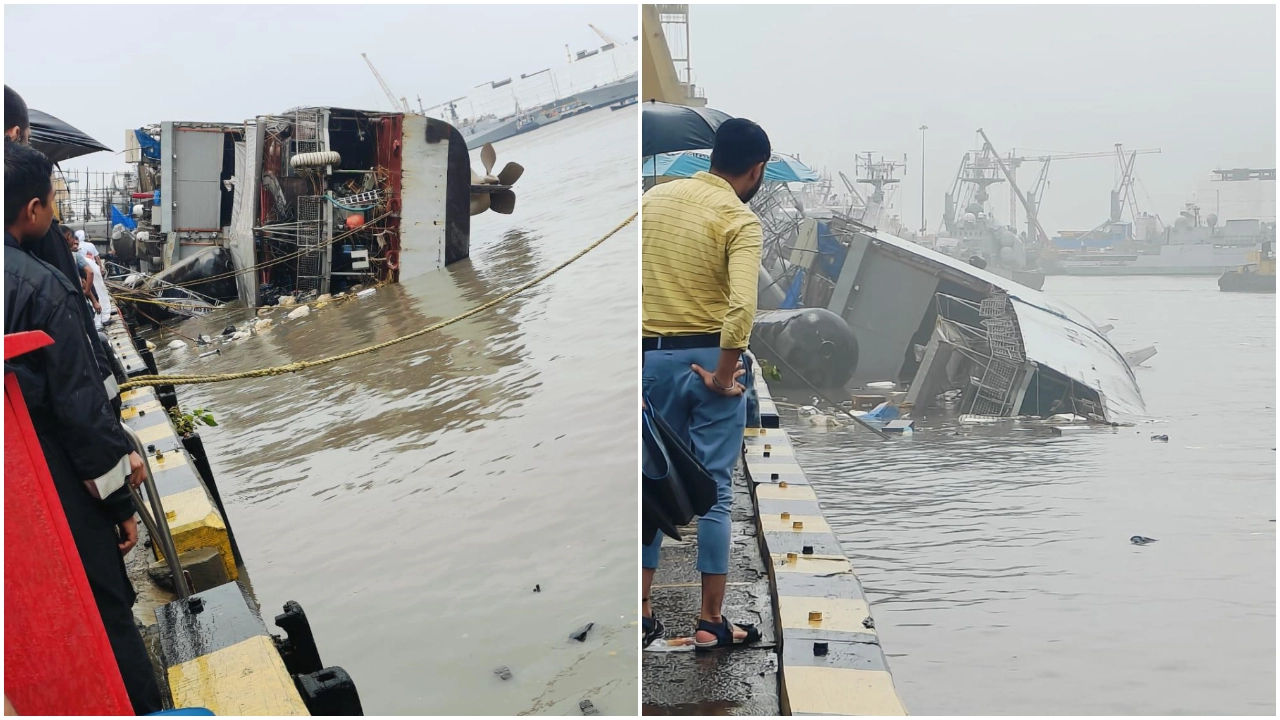
The Fire Incident
- Incident Details
The fire onboard INS Brahmaputra began on the evening of July 21, 2024, while the ship was undergoing a refit. The Indian Navy reported that the frigate experienced severe listing to one side (port side) as a result of the fire. Despite efforts to stabilize the vessel, it remained tilted and is currently resting on its side alongside its berth.
- Response and Current Status
The fire was eventually brought under control by the ship's crew, with additional support from firefighters from the Naval Dockyard, Mumbai (ND (Mbi)), and other ships in the harbor. By the morning of July 22, 2024, the Navy had managed to control the blaze and initiated follow-up actions, including sanitization checks to assess any residual fire risks. An inquiry has been ordered to investigate the cause of the accident. Union Defence Minister Rajnath Singh has directed Navy Chief Dinesh K Tripathi to oversee appropriate actions regarding the incident.
Chief of the Naval Staff Admiral Dinesh K Tripathi has apprised RM Shri @rajnathsingh of the fire breakout onboard Indian Naval Ship Brahmaputra and the damages caused by the incident.
RM prays for the safety of missing sailor.— रक्षा मंत्री कार्यालय/ RMO India (@DefenceMinIndia) July 22, 2024
Why Are India's Warships Prone to Fire in Peacetime?
The fire on INS Brahmaputra is a stark reminder of the challenges faced by the Indian Navy concerning fire incidents on its warships. The nearly 3,600-tonne frigate, equipped with a sophisticated arsenal including missiles, guns, radars, and electronic warfare systems, presents significant challenges for salvage and repair. Over the years, several incidents have highlighted concerns about the safety and maintenance protocols within the Indian Navy.
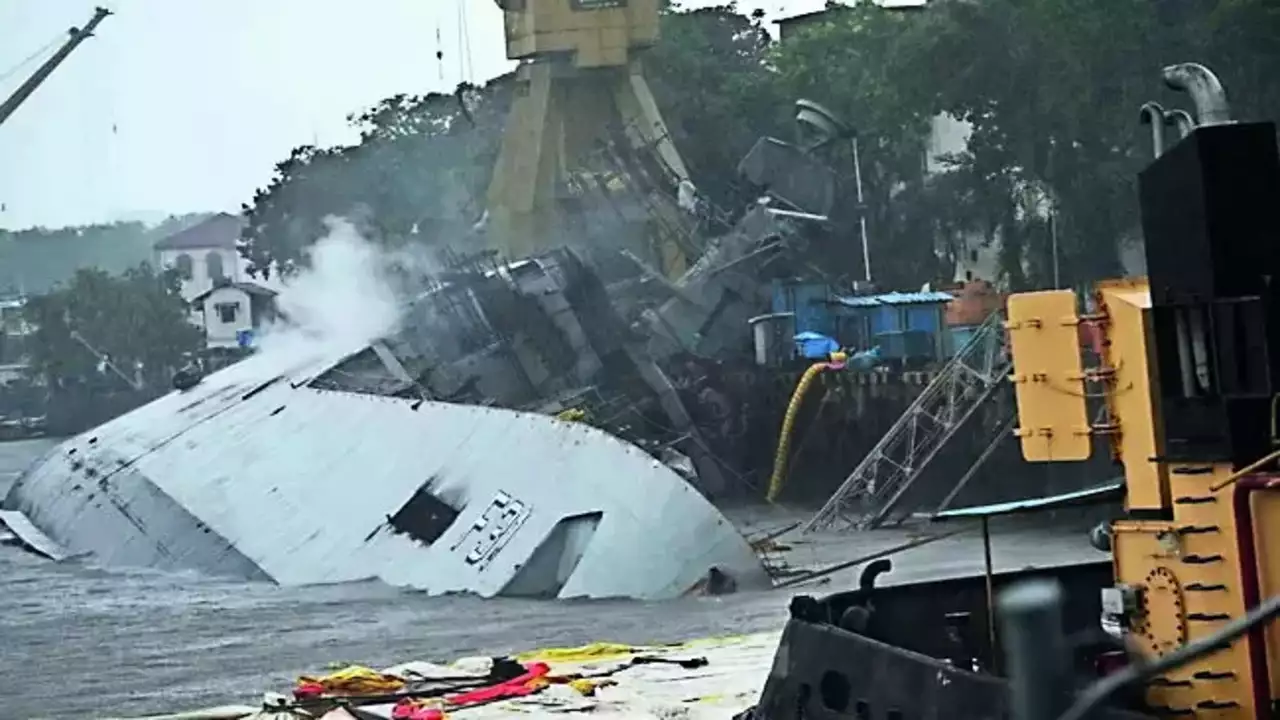
Analysis of Fire Incidents in the Indian Navy
-
INS Sindhurakshak (2013)
-
On August 14, 2013, the Kilo-class submarine INS Sindhurakshak suffered a series of explosions and a subsequent fire while docked in Mumbai. The fully armed submarine sank, resulting in the deaths of 18 naval personnel. The incident, attributed to human error and internal explosions, raised concerns about the safety of munitions handling.
-
-
INS Konkan (2013)
-
A fire broke out on December 4, 2013, aboard the minesweeper INS Konkan while docked in Visakhapatnam. Although contained, the vessel sustained considerable damage. Investigations pointed to a short-circuit and inadequate fire suppression systems as contributing factors.
-
-
INS Sindhuratna (2014)
-
On February 26, 2014, INS Sindhuratna, another Kilo-class submarine, experienced an electrical fire during a training exercise off Mumbai. The resulting smoke led to the deaths of two officers and several cases of smoke inhalation among the crew. This incident prompted the resignation of Admiral DK Joshi, who took moral responsibility.
-
-
INS Viraat (2016)
-
In September 2016, a minor fire occurred aboard the decommissioned aircraft carrier INS Viraat during welding operations at Mumbai Dockyard. The quick control of the fire underscored the need for stringent safety measures even on decommissioned vessels.
-
-
INS Betwa (2016)
-
On December 5, 2016, the guided missile frigate INS Betwa toppled over due to a failure in dock-blocks while undocking in Mumbai. The accident resulted in two deaths and 14 injuries, raising concerns about ship-handling procedures and dock safety.
-
-
INS Shivalik (2018)
-
On January 10, 2018, a fire broke out in the engine room of the stealth frigate INS Shivalik at the Karwar Naval Base. Caused by an oil leak, the fire highlighted the vulnerability of advanced vessels to such risks.
-
-
INS Ranvir (2022)
-
On January 18, 2022, an explosion led to a fire on the destroyer INS Ranvir at the naval dockyard in Mumbai. The explosion, possibly related to an air-conditioning system malfunction, resulted in three deaths and 11 injuries.
-
-
INS Sahyadri (2023)
-
In March 2023, INS Sahyadri experienced a fire in the engine room during a routine patrol mission in the Indian Ocean. The fire was attributed to a technical fault in the fuel lines.
-
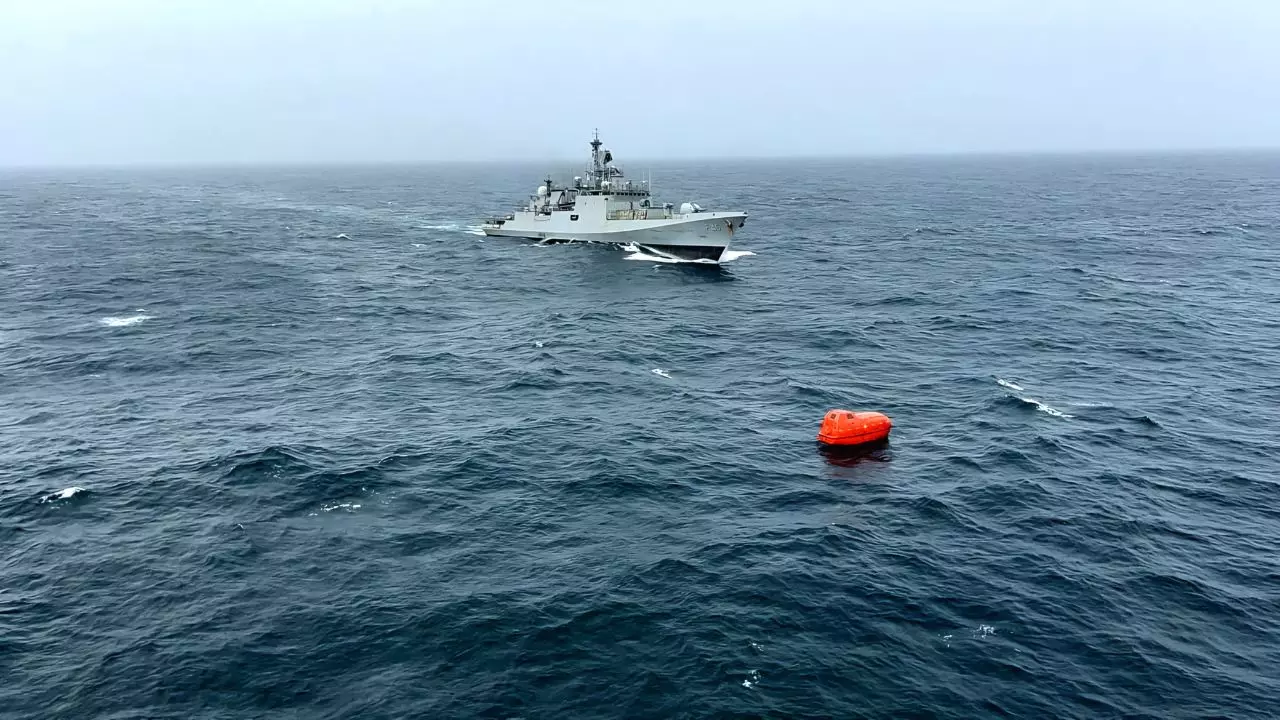
Causes of Fires in the Indian Navy
The recurring fire incidents in the Indian Navy are attributed to several factors:
-
Ageing Fleet: Many vessels, including submarines like INS Sindhurakshak and INS Sindhuratna, are over two decades old, making them more prone to mechanical failures.
-
Maintenance Lapses: Budget constraints and resource allocation issues often lead to delays in maintenance, impacting operational safety.
-
Human Error: Procedural lapses and human errors have been recurrent issues, as evidenced by incidents like those involving INS Sindhurakshak and INS Sindhuratna.
-
Technical Failures: Malfunctions in electrical systems and engines, such as battery failures and short circuits, have been identified as causes of fires.
-
Safety Protocols: There is a need for a thorough review and enhancement of safety protocols and fire suppression systems to address onboard risks effectively.
_1721724567.webp)
Impact on Operational Readiness
The impact of these fire incidents is significant. The loss of assets like INS Sindhurakshak depletes naval capabilities and creates strategic gaps. The financial burden of repairing and replacing damaged vessels strains the navy’s budget, diverting resources from modernization efforts. Psychological impacts on personnel can affect morale and operational effectiveness. Operational delays during repairs also lead to gaps in maritime security coverage.
The series of fire incidents within the Indian Navy underscores the urgent need for comprehensive strategies in maintenance, training, and modernization. Continuous vigilance and proactive measures are essential to safeguard naval assets and ensure operational readiness.
With inputs from agencies
Image Source: Multiple agencies
© Copyright 2024. All Rights Reserved Powered by Vygr Media.

